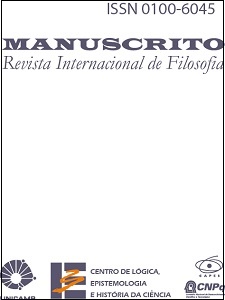Resumo
What role does literal meaning play in people’s understanding of indirect and figurative language? Scholars from many disciplines have debated this issue forseveral decades. This chapter describes these debates, especially focusing on the arguments between the author and Marcelo Dascal. I suggest that Dascal’s defense of “moderate literalism” may have some validity, contrary to some of my earlier arguments against this point of view. The chapter acknowledges the strong contribution that Marcelo Dascal has made to interdisciplinary discussions on language and thought.
Referências
CARSTON, R. (1993). “Conjunction, Explanation, and Relevance”. Lingua, 90, pp. 27-48.
DASCAL, M. (1987). “Defending Literal Meaning”. Cognitive Science, 11, pp. 259-281.
———. (1989). “On the Roles of Context and Literal Meaning in Understanding. Cognitive Science, 13, pp. 253-257.
GIBBS, R. (1984). “Literal Meaning and Psychological Theory”. Cognitive Science, 8, pp. 275-304.
———. (1989). “Understanding and Literal Meaning”. Cognitive Science, 13, pp. 243-251.
———. (1994). The Poetics of Mind: Figurative Thought, Language, and Understanding. (New York, Cambridge University Press.) ———. (1999b). “Speakers’ Intuitions and Pragmatic Theory”. Cognition, 69, pp. 355-359.
GIBBS, R. & MOISE, J. (1997). “Pragmatics in Understanding what is Said”. Cognition, 62, pp. 51-74.
GIORA, R. (1997). “Understanding Figurative and Literal Language: the graded salience hypothesis”. Cognitive Linguistics, 7, pp. 183-206.
GLUCKSBERG, S. & KEYSAR, B. (1990). “Understanding Metaphorical Comparisons: beyond similarity”. Psychological Review, 97, pp. 3-18.
GRICE, H.P. (1975). “Logic and Conversation”. In: Peter Cole & James Morgan (eds.) Syntax and Semantics 3: Speech Acts (pp. 41-58) (New York, Academic Press). ———. (1978). “Further Notes on Logic and Conversation”. In: P. Cole (ed.) Syntax and Semantics: Vol. 6. Pragmatics (pp. 113-127) (New York, Academic Press).
HAMBLIN, J. & GIBBS, R. (2001). “Processing the Meanings of what Speakers Say and Implicate”. (Manuscript submitted for publication.)
NICOLLE, S. & CLARK, B. (1999). “Experimental Pragmatics and what Is Said: a response to Gibbs and Moise”. Cognition, 69, pp. 337-354.
PILKINGTON, A. (2000). Poetic Effects. (Amsterdam, Benjamins.) RECANATI, F. (1989). “The Pragmatics of what Is Said”. Mind and Language, 4, pp. 295-329.
———. (1993). Direct Reference: From Language to Thought. (Cambridge, Blackwell).
SEARLE, J. (1978) “Literal Meaning”. Erkenntnis, 13, pp. 207-224.
———. (1979). “Metaphor”. In: A. Ortony (ed.) Metaphor and Thought (pp. 92-123) (New York, Cambridge University Press).
———. (1983). Intentionality. (Cambridge, Cambridge University Press).
SPERBER, D, & WILSON, D. (1986). Relevance: Communication and Cognition (Oxford, Blackwell).

